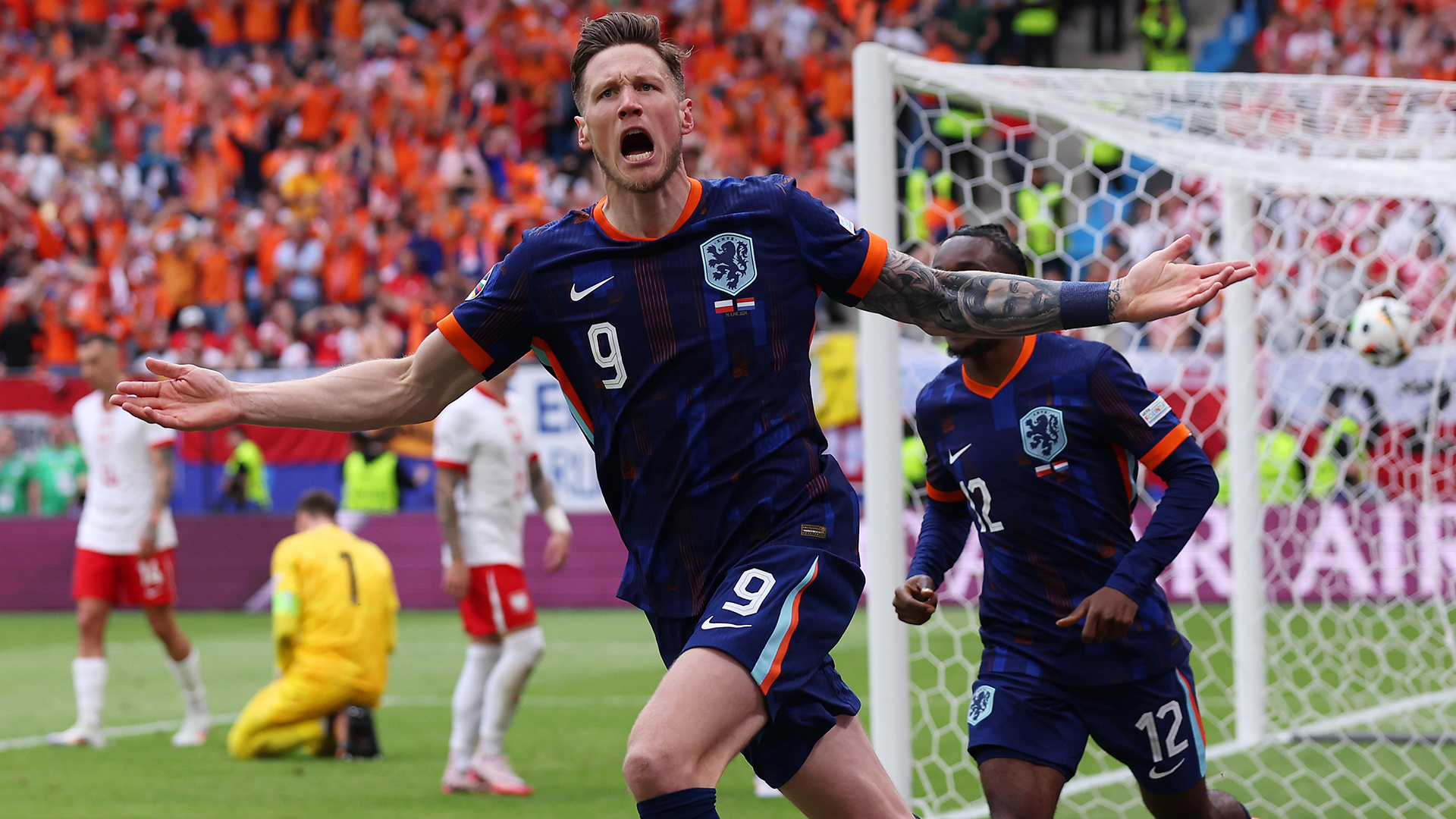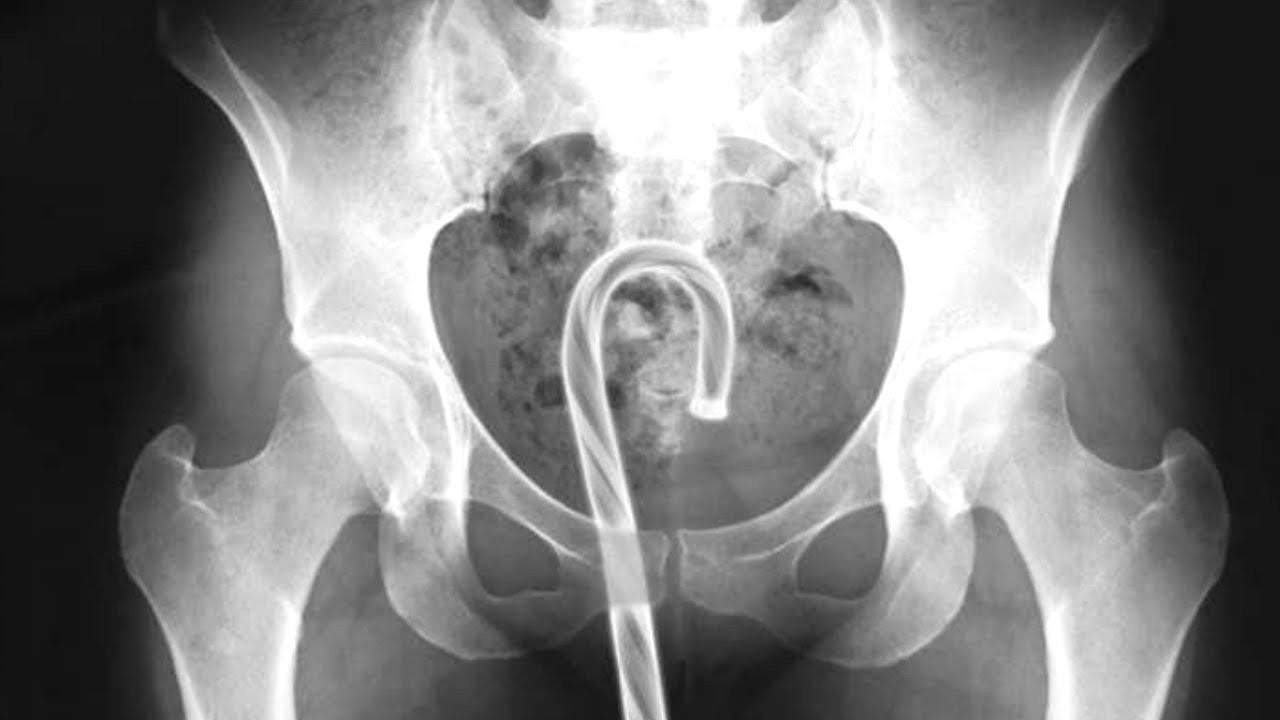By structure and necessity, international soccer tends to have a less sophisticated tactical style than its club counterpart. Club seasons are so long and international breaks so short, so there simply isn't enough time for national teams to train together and develop an advanced tactical gameplan. Even when a country does employ something unique, it is usually because enough of its players are either club teammates or play for different clubs with similar approaches. (See: Spain's Barcelona contingent from 2008-2012, or Germany's Bayern Munich core in 2014.)
While this can make for a homogenized international game in certain ways—4-2-3-1 pressing systems clashing against each other tend to not make for the most exciting of matches—it also opens up space to deploy tried and true methods simple enough for a tournament. Three-plus days into Euro 2024, one of those tactics has been at the forefront: just chuck it forward to a big guy, and let him sort it out.
There might not be a more perfect counterpoint between the modern club game, which tends to value pace and technical skill, and the international game, where results are all that matter, than what the Netherlands did against Poland on Sunday. After the two sides traded goals inside the first half hour—Poland utilized an international staple and scored from a corner; the Netherlands answered back via Cody Gakpo and a deflection 13 minutes later—the game settled into a rhythm. The Netherlands controlled most of the ball and chances, but the attacking trio of Gakpo, Memphis Depay, and Xavi Simons were better at finding space than finding the back of the net. Fast forward to the 81st minute, where Dutch manager Ronald Koeman introduced his big lad, swapping Memphis for all six feet and six inches of Wout Weghorst in search of a winner.
Weghorst has had an interesting career. After moving from his native Netherlands to Wolfsburg in Germany, he scored at a tidy rate, tidy enough to earn a move to Burnley in the Premier League, where his production fell off a cliff. Loans followed, including a truly disastrous one at Manchester United in 2023, and while he is still on the books at Burnley, he's no one's idea of prolific anymore. Still, though, Weghorst is a good tool to have for Koeman. He's large, he does have a nose for goal, and he can serve as a target for forward passes and crosses, as proven most memorably in the thrilling though ultimately losing comeback effort against Argentina at the 2022 World Cup. While a player like Memphis is, even in his inconsistency, noticeably better than Weghorst, the big Dutchman might be better suited for games like the one against Poland, where a tough defense squeezes Memphis's preferred spaces into nothingness.
Two minutes after stepping onto the field, Weghorst did what he was brought on to do. In fairness, it wasn't exactly a target man's goal, as Weghorst moved into an open space and latched on to a bouncing pass before first-timing it into the goal, giving the Dutch the win. But watching the play again reveals that Polish defender Bartosz Salamon (6-foot-5, by the way) was playing off of Weghorst, seemingly to have a better position to defend against a high ball into the box. It wasn't great defending, as he then lost Weghorst just enough, but it does speak to the effect of having a dude that tall in the box.
👏🏻😀 ¡Países Bajos firma la remontada frente a Polonia! 🇳🇱⚽️✅
— TUDN USA (@TUDNUSA) June 16, 2024
🦸🏻♂️ Wout Weghorst se pone la capa de héroe entrando de cambio y marcando el gol de la victoria 🔥🔥🔥🔥
🔴 EN VIVO por @VIX
📲 🇺🇸 https://t.co/nRppWE4J4J
#EuroEnVIX pic.twitter.com/BrEFegNPrH
Weghorst isn't the only big man to make an impact so far this tournament. Almost every game to date has had at least one big man start or sub on with success, whether on the scoresheet or simply in the run of play. The tournament opener between Germany and Scotland was a one-sided romp by the hosts, and in the five-goal barrage, there was Borussia Dortmund's Niclas Füllkrug (6-foot-2), fresh off a Champions League final run in which he scored multiple key goals for the Germans, tallying his country's fourth goal with a powerful banger from inside the box, his natural habitat:
Niclas Füllkrug with an absolute SCREAMER for Germany 💥⚽️
— FOX Soccer (@FOXSoccer) June 14, 2024
Germany makes it 4-0 🇩🇪 pic.twitter.com/Edow5UbjvK
Elsewhere, Denmark and Slovenia fully embraced the big striker lifestyle, with both teams starting target men at both striker positions: for Denmark, Rasmus Hojlund and Jonas Wind (both 6-foot-3), and for Slovenia, Andraz Sporar (a comparatively small 6-foot-1) and Benjamin Sesko (a whopping 6-foot-5). The size on display was so noticeable that Christian Eriksen, who scored Denmark's emotional opener three years after collapsing on the field at the last edition of the Euros, looked small, despite measuring at a healthy six feet.
El fútbol da revanchas 😭😭😭
— TUDN USA (@TUDNUSA) June 16, 2024
1,100 días después de que sufrió un paro cardíaco en pleno partido de la Euro, Eriksen anota el primer gol de Dinamarca en esta Eurocopa ❤️🩹🥺
🇸🇮 Eslovenia 0 - 1 🇩🇰 Dinamarca
🔴 EN VIVO por @VIX
📲 🇺🇸 https://t.co/nRppWE4J4J
#EuroEnVIX pic.twitter.com/J0v2vPokYB
Even some of the players who didn't participate all that much in their respective games fit the same bill. Italy's starting no. 9 is Gianluca Scamacca, who measures 6-foot-5. Chasing an equalizer against Switzerland, Hungary put on immediate and reluctant folk hero Martin Adam, who is 6-foot-3 and built like a tank. Serbia's front three against England might have been the biggest of the tournament so far, as Dusan Vlahovic, Aleksandar Mitrovic, and Sergej Milinkovic-Savic all measure over 6-foot-2.
It's a big lad summer in Germany, and it's enthralling to watch an archetype that has been pushed to the margins of the game's elite by the progression from long ball soccer to more possession-controlled, skilled soccer that has taken place this century. These types of strikers haven't been written out of modern soccer entirely (in fact, a big target man is a helpful resource to bypass the high pressing that's all the rage), and they might never be, but they are generally more technically limited and therefore easier to gameplan against on a weekly basis at club level. Size also isn't everything, even for these players, and a handful of them have either more pace or more technical skill than one would expect from the traditional target man.
Still, though, it's only really at something like the Euros where these types of players can grab the spotlight. When in doubt, teams can just chuck up balls in the air to the guy measuring 6-feet-plus and see what happens. So far, that strategy has worked more often than not, and it is not likely to go away as the games get tighter and tenser. Bring on the big lads.







